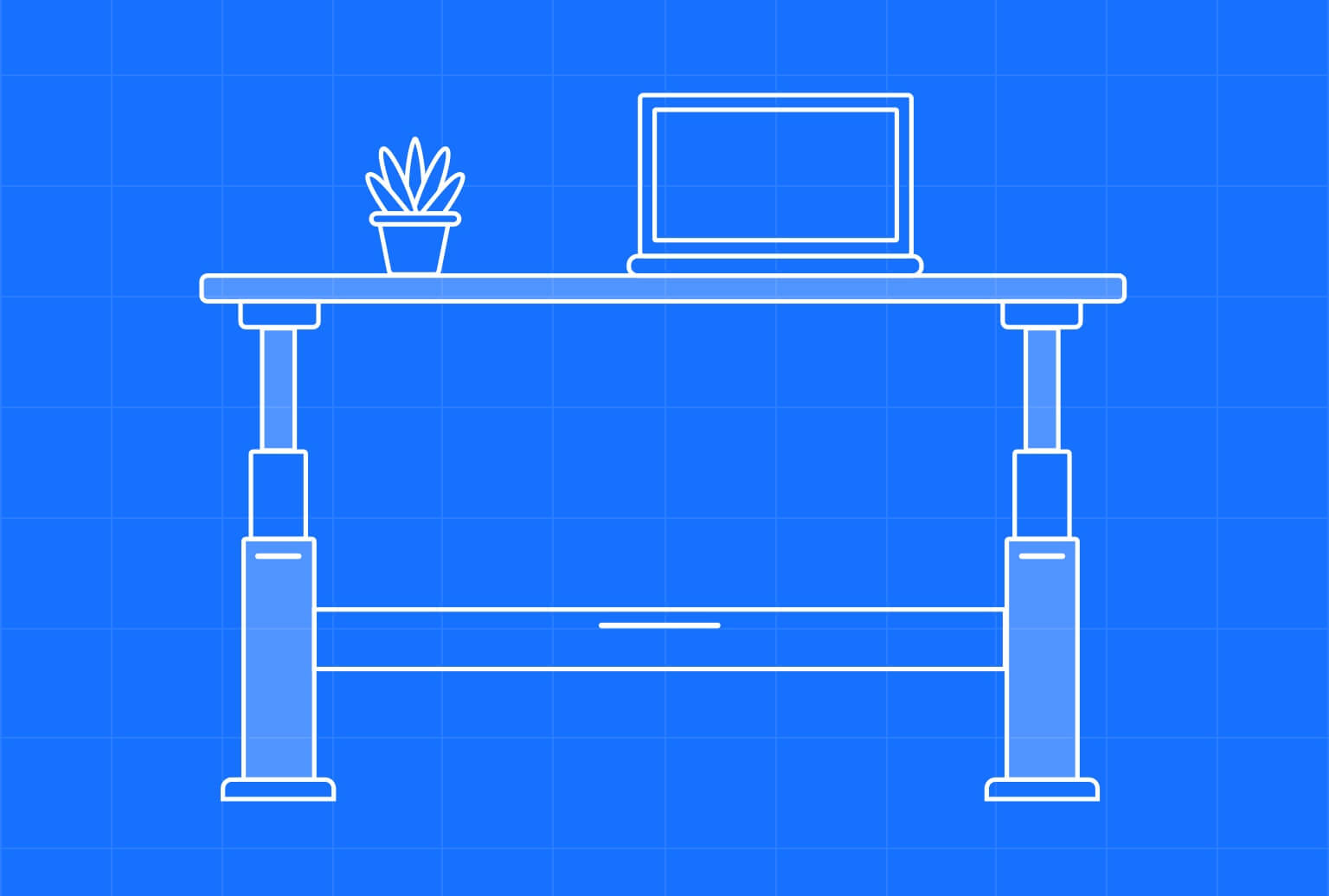Standing desks have been a popular topic for businesses for a while – many companies have adopted designated high-top areas that can serve as standing desks or even desks that have a convertible crank system.
There have been entire companies (like tech titan Apple) that have dedicated office space to standing workstation equipment. But does it actually help people?

Let’s Look at Some Recent Studies About Standing Desks
In one study published by the Texas A&M Health Science Center School of Public Health, researchers looked at the effect of standing desks on high school freshmen.
The scientists were looking to see if the students’ executive decision-making processes were affected while using a standing desk versus sitting. These students were tested at the beginning and end of the semester and were examined with a portable brain-imaging device that measured frontal lobe activity (where executive decision making happens.)
The results showed a noticeable difference in brain function:
The study also observed changes in corresponding brain activation. That nifty portable brain-imaging device specifically measured the participants’ oxygenated hemoglobin since it’s a good way to measure brain activity. During the tests, there was significantly more activity in the frontal lobe.
So the short of it is yes, standing did help these students perform better on their tests and their brain activity was more active. Keep in mind this is one study in a classroom setting, but the results are certainly encouraging.
The Proof is in the Stroop (the test, not the waffle)
Another recent study done in 2017 called ‘Stand by Your Stroop’, showed similarly encouraging results. This study looked at how participants performed on the ever-famous Stroop test (that’s the one where the word ‘Blue’ appears on the screen in a color that’s not blue).

This study tested two groups of sitters against two groups of standers. The standers were able to respond ever so slightly faster – 100 milliseconds vs 120 milliseconds response time. While it seems like a small number, your brain is doing a lot of work all the time and a few milliseconds can make a difference.
Addressing Common Misconceptions Around Standing Desks
What comes to mind when you think of yourself using a standing desk? Some people believe it means standing on their feet all day with no sitting breaks, while others envision it as a workout hack that burns way more calories than sitting.
Here are a few common misconceptions to understand about standings desks before you get started:
Misconception #1: Standing burns double the calories vs. sitting
Nope. Sorry folks, but this one isn’t true. This study by the Journal of Physical Activity found that participants burned 80 calories per hour while sitting, and 88 calories per hour while standing.
While standing does burn a few more calories than sitting, it’s probably not going to make a big difference in your daily calorie burn. Try a quick walk around the block on your lunch break instead, which can burn around 100 calories per half hour.
Misconception #2: I need a fancy setup
Again, nope! A quick Google will reveal standing desk setups that range from the ultra-luxe to ‘here’s a plank I nailed to a wall.’
While there are some major ergonomic considerations to make with any standing situation, you can jerry-rig something yourself without having to decimate your bank account.
Check out a list of ideas at StartStanding.org and The Spruce Crafts for different ways to DIY your own standing desk. A thrifty DIY setup is a great way to test it out.
Misconception #3: My back will hate it
As long as you don’t overdo it, your body will probably feel better standing for a bit than sitting all day. As mentioned earlier, the ergonomics are important, but if you have the correct setup, it’s much harder to slouch or have bad posture when you’re standing.
Start with 30 minutes to one hour per day. Also, think about your feet. Standing bare feet on a concrete floor probably won’t feel great after an hour. So, you might want to think about wearing comfy shoes or stand on something more forgiving.
Misconception #4: It’s all or nothing
Standing for 4-8 hours non-stop seems a bit daunting to the newly-inducted standing desk devotees. So if you make the switch, do you kiss the chair goodbye? No.
Most people can figure out a way to modify their space to accommodate both a standing and sitting situation.
The researchers over at Texas A&M did another study on the impact of standing desks, this time at a call center, measuring the productivity of standing and sitting employees vs. sitting-only employees.
Over a six-month period, the stand-and-sit people were a whopping 46% more productive. Stand and sit for the win!
Standing or Sitting, It’s Up To You
You might be one of the people who find they love standing for most of the day. If so, more power to you.
But more than likely, most people will benefit from a combination stand-and-sit situation. We recommend trying a standing workspace for short periods at a time to see if it makes a positive impact on your work or study results. If you find that you’re seeing positive results, keep with it!
Whether it’s time to buy some supplies on Amazon or go find the nearest cardboard box you have laying around, go give a standing desk experience a try!

 learning science
learning science